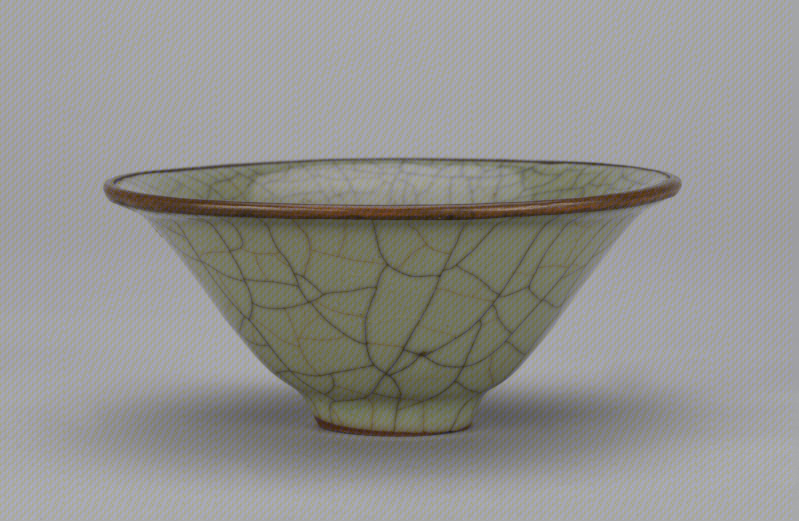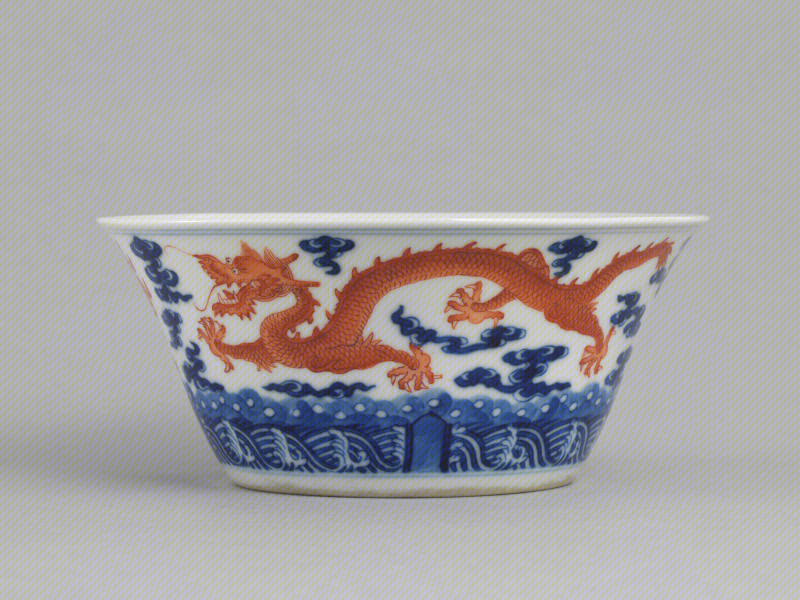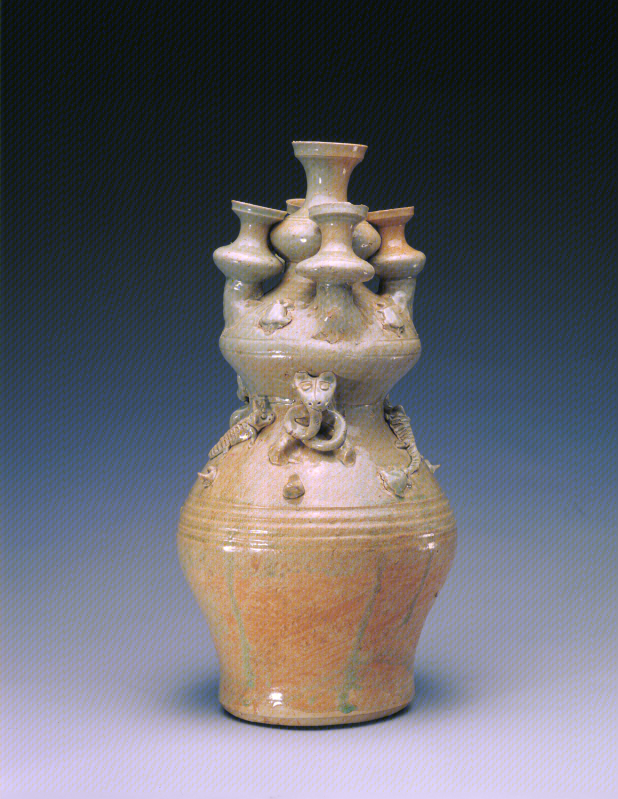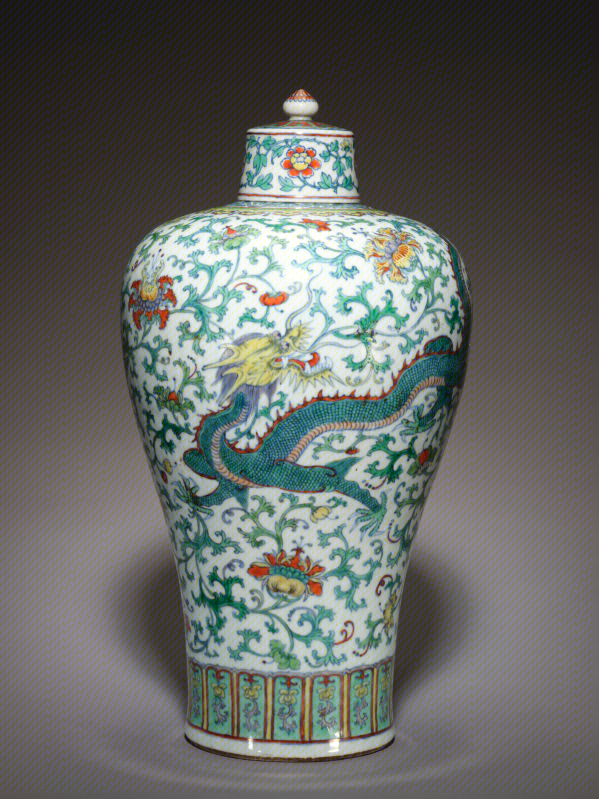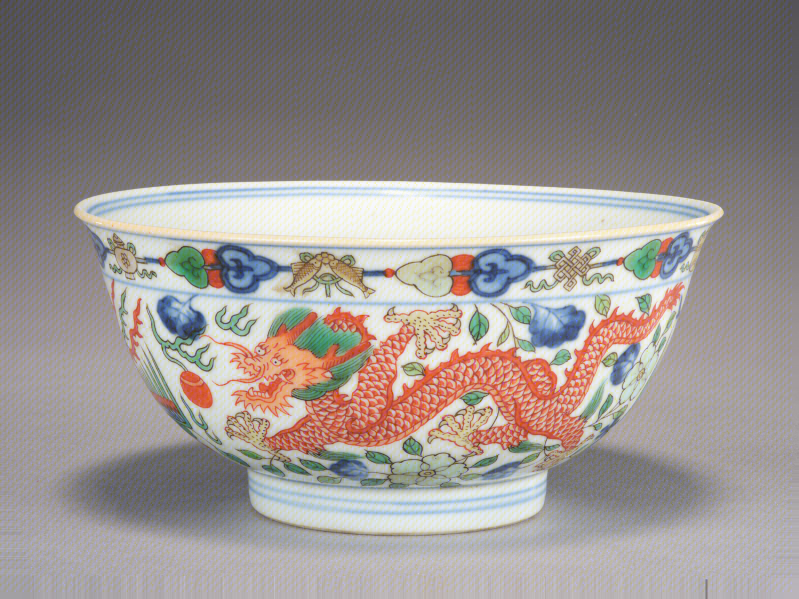
Blue-and-white Celestial-sphere Vase with Underglaze-red Dragon-among-clouds Design and Qianlong Reign Mark
Period: Qianlong reign (1736–1795), Qing dynasty (1644–1911)
Dimensions: height: 47 cm; mouth diameter: 10.7 cm; foot diameter: 15.5 cm
This globular vase has a straight mouth rim, long neck, and ring foot. The interior is covered in white glaze while the exterior is ornamented with a dragon in underglaze red soaring through blue clouds above a turbulent sea. The underside is inscribed with a blue three-column, six-character seal-script mark reading “Made in the Qianlong Reign of the Great Qing” (Da Qing Qianlong nianzhi).
An innovation by kiln artisans of the Yongle (1403–1424) and Xuande (1426–1435) reigns during the Ming dynasty (1368–1644), celestial-sphere vases (tianqiu ping, variously translated as globular, celestial-globe vase, sky-globular vase, or bottle vase) are embellished primarily with blue designs. During the Yongzheng (1723–1735) and Qianlong (1736–1795) reigns of the Qing dynasty (1644–1911), variations in blue with underglaze red, contrasting colors, and famille rose were made. The elegant vase has a sturdy design—one rather commonly seen among ceramics made at official kilns during the Qianlong period. Positively reflecting the ancient Chinese concept of “clouds following the dragon” (yun cong long), the portrayal of the dragon with three sections of its body exposed while the rest is concealed behind clouds is a technique prevalent on works of the Shunzhi reign (1644–1661). The style of mottled clouds is seen most commonly on pieces from the same earlier period but was used during the subsequent Kangxi reign (1662–1722) and employed with enhanced realism during the Qianlong period.




